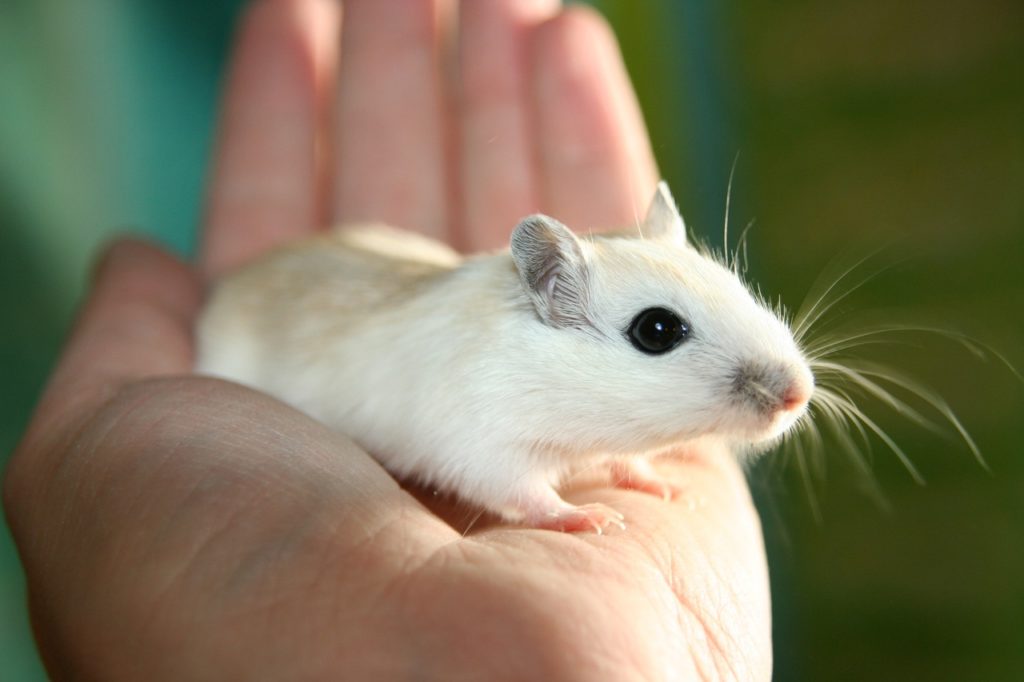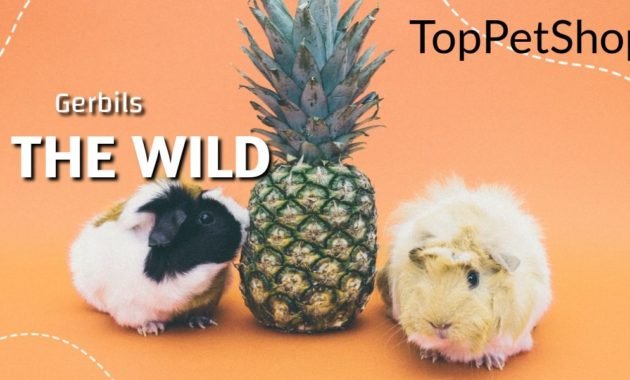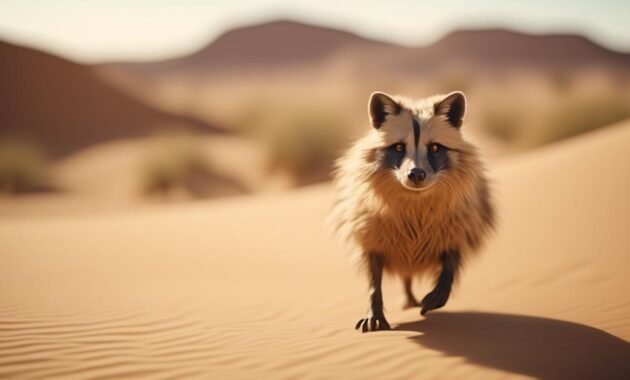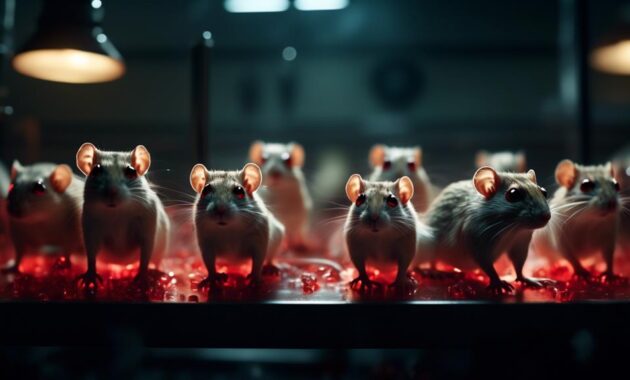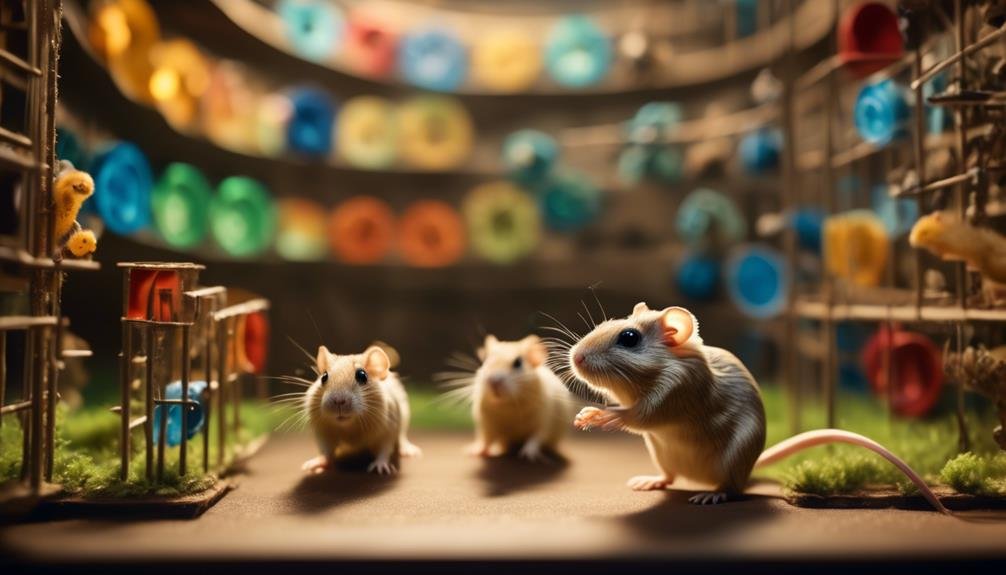
Mongolian gerbils, with their fascinating history, widespread popularity as pets, and recent genetic discoveries, have captivated the curiosity of both researchers and pet enthusiasts alike.
Originating from the grasslands and deserts of China, Mongolia, and the Russian Federation, these small rodents have adapted remarkably well to their harsh environments. But their significance goes beyond their adaptability; gerbils have played a pivotal role in scientific research, particularly in the fields of hearing loss, epilepsy, and diabetes.
Moreover, their sociable nature and ease of handling have made them popular companions for many. However, there are important health considerations and care requirements that potential owners should be aware of.
With the recent genetic discoveries shedding new light on these captivating creatures, it is clear that there is much more to uncover about Mongolian gerbils.
Key Takeaways
- Mongolian gerbils are native to grassland, shrubland, and desert environments in China, Mongolia, and the Russian Federation.
- They have a long history of use in scientific research, particularly in studying human hearing loss, epilepsy, and diabetes.
- Gerbils are sociable creatures that enjoy human company and are not aggressive, making them popular pets.
- There are various coat colors and genetic mutations in Mongolian gerbils, and selective breeding has resulted in a wide range of color varieties.
Habitat and Natural Behavior
Mongolian gerbils thrive in diverse habitats, including grasslands, shrublands, and deserts, where they display fascinating natural behaviors. These small rodents inhabit semidesert and steppe environments in China, Mongolia, and the Russian Federation. The steppes, characterized by sandy soil and grasses, herbs, and shrubs, provide an ideal setting for gerbils to establish their burrows.
The temperature in their habitat can reach extreme levels, with summers reaching up to 50°C (122°F). Gerbils live in patriarchal groups, and their intricate burrows often interconnect with other groups, creating a complex social network.
The first known mention of gerbils was in 1866 by Father Armand David, and they were later brought to the French National Museum of Natural History in Paris. Today, gerbils are popular pets and have also been extensively used in scientific research, particularly in the study of hearing loss, epilepsy, and diabetes.
Historical Significance and Discovery
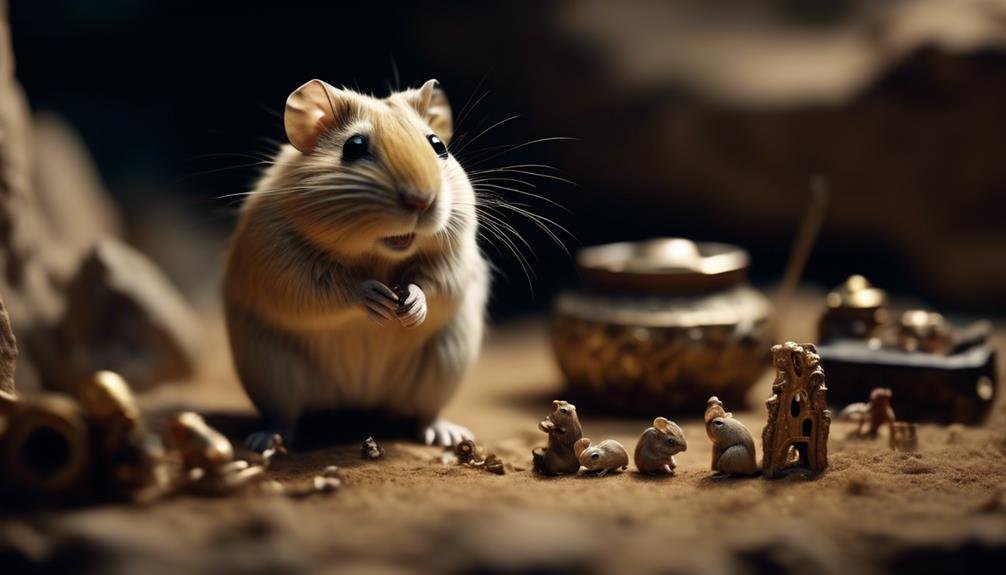
The historical significance of gerbils extends beyond their natural habitat and behavior, as they have played a pivotal role in scientific research and have become popular pets around the world.
Gerbils have a long history of use in scientific research, particularly in the fields of hearing loss, epilepsy, and diabetes research. They are considered a suitable model for studying human hearing loss due to their wide hearing range.
In addition, gerbils have been used in genetic research, with the publication of a Mongolian gerbil genome sequence in 2018 and a genetic map in 2019.
Furthermore, gerbils have become popular pets, especially in the English-speaking world, since their introduction to the United States in 1954 for scientific testing. Most pet gerbils today are descendants of those brought to the United States in 1954.
Role in Scientific Research

Gerbils have played a crucial role in scientific research, particularly in the fields of hearing loss, epilepsy, and diabetes research. Their unique characteristics and genetic makeup make them valuable models for studying these conditions.
Here are some ways in which gerbils have contributed to scientific advancements:
- Studying human hearing loss: Gerbils have a wide hearing range, similar to humans, making them ideal for studying hearing loss and developing treatments.
- Investigating epilepsy: Gerbils are susceptible to inherited epilepsy, allowing researchers to study the genetic factors and mechanisms underlying this condition.
- Understanding diabetes: Gerbils can develop obesity and pancreatic islet hyperplasia, providing insights into the development and progression of diabetes.
Popularity as Pets
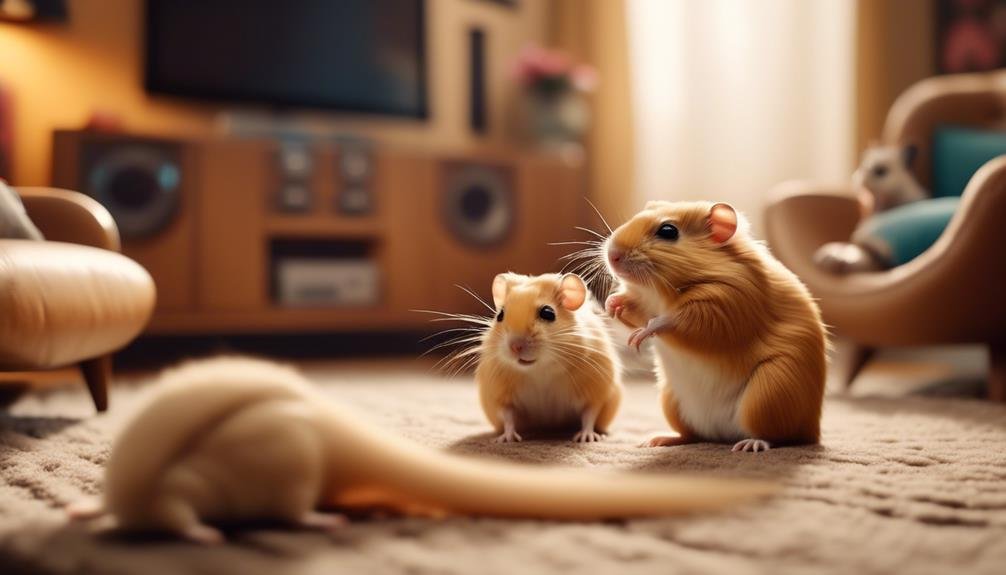
Gerbils have gained significant popularity as pets due to their sociable nature and ease of handling. These small rodents are known for their friendly and curious personalities, making them enjoyable companions for both adults and children. Unlike some other small pets, gerbils are generally not aggressive and rarely bite unprovoked, making them a suitable choice for families.
Additionally, gerbils are easy to handle due to their small size and adaptability to human interaction. They are also clean animals with minimal odor, thanks to their adapted kidneys that produce minimal waste.
With their social nature and low maintenance requirements, gerbils have become a popular choice for pet owners seeking a small and interactive companion.
Health Concerns and Care
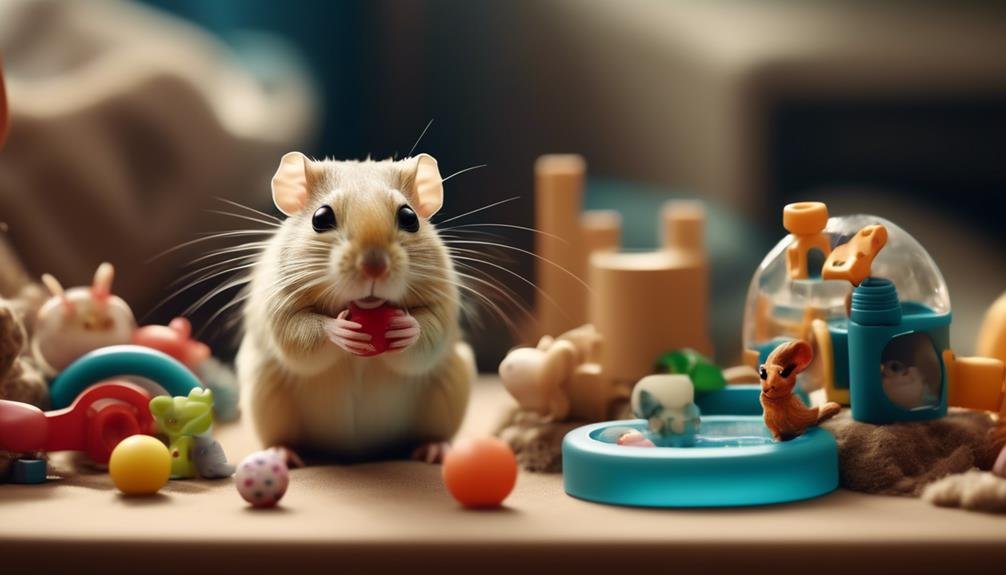
Due to their popularity as pets, it is important for gerbil owners to be aware of the health concerns and proper care required to ensure the well-being of these sociable creatures. Here are some key points to consider:
- Teeth problems: Gerbils can experience overgrowth and injury if their teeth are not properly maintained.
- Trauma: Accidents or rough handling can lead to broken limbs or a fractured spine.
- Neglect: Dehydration, starvation, ulcers, and even cannibalism can occur if gerbils are not given proper care and attention.
- Epilepsy: Approximately 20-50% of pet gerbils may develop epilepsy, often triggered by fright or handling.
- Tumors: Female gerbils over the age of two are prone to developing both benign and malignant tumors.
Captive-Bred Gerbils and Coat Colors

Selective breeding has led to the availability of many color varieties of captive-bred gerbils, with over 20 different coat colors observed in Mongolian gerbils. These color variations have been achieved through genetic mutations and careful breeding practices. Some of the popular coat colors include Golden Agouti, Lilac, Dove, Burmese, and Light Colourpoint Agouti. Additionally, white spotting coat patterns have been observed in different gerbil species. The fat-tailed gerbil, also known as the duprasi, is smaller in size and has a distinct coat compared to the Mongolian gerbil. Here is a table showcasing some of the coat colors observed in captive-bred gerbils:
| Coat Color | Description |
|---|---|
| Golden Agouti | Light brown fur with a golden tint |
| Lilac | Pale grayish-brown fur |
| Dove | Soft gray fur |
These color variations add to the charm and appeal of gerbils as popular pets among enthusiasts.
Biology and Genetics
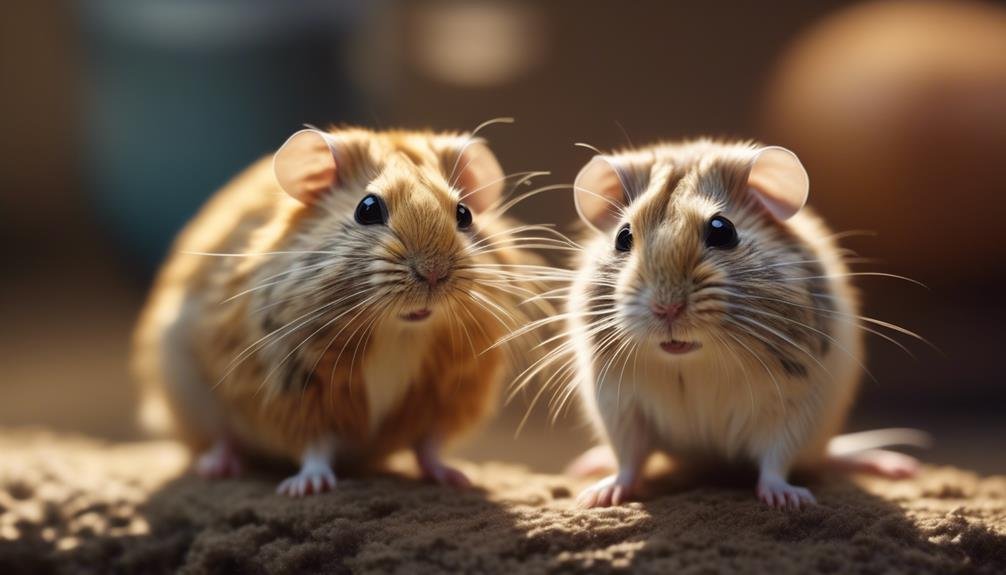
The study of biology and genetics in Mongolian gerbils offers valuable insights into their physiological characteristics and heritable traits. Understanding the biology and genetics of these fascinating creatures is essential for their care and management.
Here are three key points about the biology and genetics of Mongolian gerbils:
- Genomic Sequencing: In 2018, the Mongolian gerbil genome sequence was published, providing scientists with a comprehensive understanding of their genetic makeup. This breakthrough allows researchers to study specific genes and their functions in gerbils more effectively.
- Inherited Diseases: Mongolian gerbils are susceptible to inherited conditions such as epilepsy, obesity, and pancreatic islet hyperplasia. By studying the genetic basis of these diseases, researchers can develop targeted interventions and treatments for affected gerbils.
- Aggressive Behavior: Gerbils exhibit varying degrees of aggression, influenced by factors such as age and sexual experience. Understanding the genetic and physiological factors that contribute to aggressive behavior can help owners and researchers manage and prevent conflicts among gerbils.
Social Behavior and Aggression
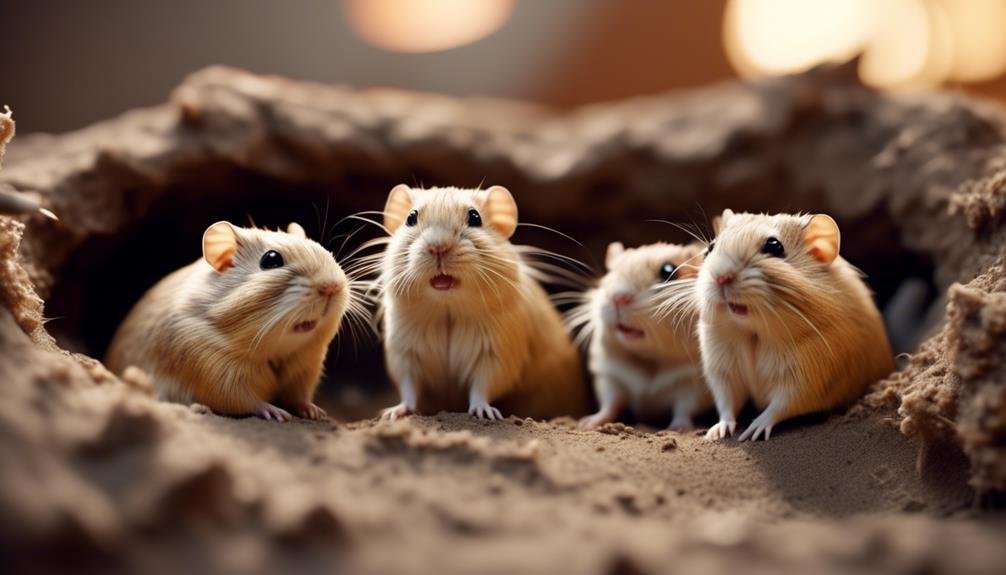
Gerbils, known for their sociable nature and complex social structures, exhibit various forms of social behavior and occasional aggression.
In their natural habitat, gerbils live in patriarchal groups and their burrows often interconnect with other groups. Within these groups, gerbils engage in social activities such as grooming, playing, and nest building. They establish hierarchies and communicate through vocalizations, body language, and scent marking.
While gerbils are generally not aggressive, occasional aggression can occur, especially during territorial disputes or when establishing dominance within the group. Aggressive behaviors may include chasing, biting, or fighting. However, these instances are relatively rare and can be mitigated through proper socialization and providing a suitable environment that allows for sufficient space and resources for all gerbils in the group.
Burrowing Instincts and Habitat Needs
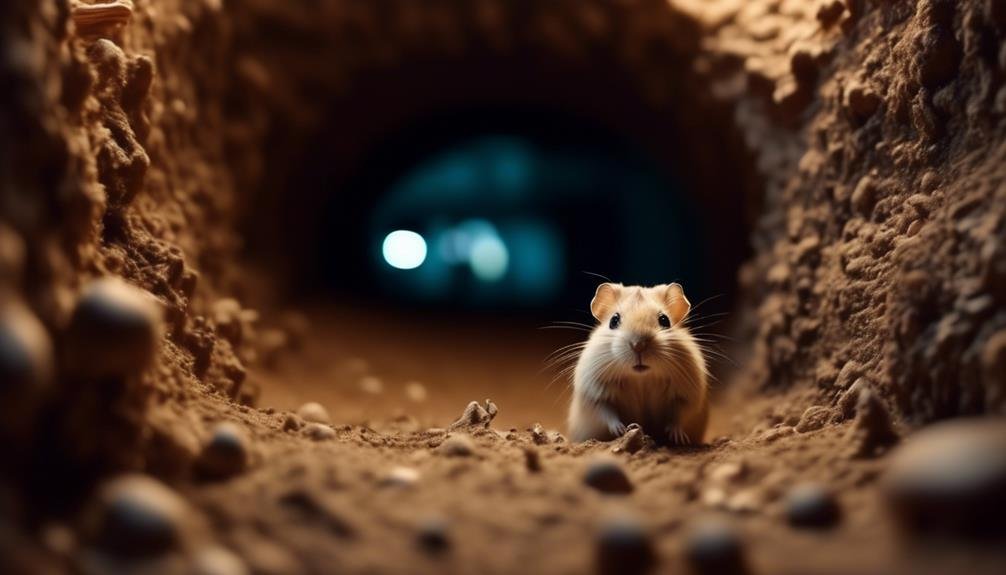
Mongolian gerbils exhibit a strong instinct for burrowing and have specific habitat needs that cater to this natural behavior. To ensure the well-being of these small rodents, it is important to provide them with suitable habitats that fulfill their burrowing instincts.
Here are three key aspects of their habitat needs:
- Substrate: Gerbils require a deep layer of loose, sandy substrate in their enclosures. This allows them to dig elaborate burrows and tunnels, mimicking their natural habitat. Materials such as sand, soil, and shredded paper bedding can be used to create an ideal substrate.
- Hideouts: Providing various hideouts, such as tunnels, tubes, and small caves, allows gerbils to create a complex network of burrows. These hiding spots not only satisfy their instinctual need for security but also promote mental stimulation and physical exercise.
- Enrichment: Adding objects like branches, roots, and rocks to the gerbil’s habitat can further enhance their burrowing experience. These items provide opportunities for exploration, climbing, and gnawing, which are essential for their overall well-being.
Lifespan and Dietary Requirements
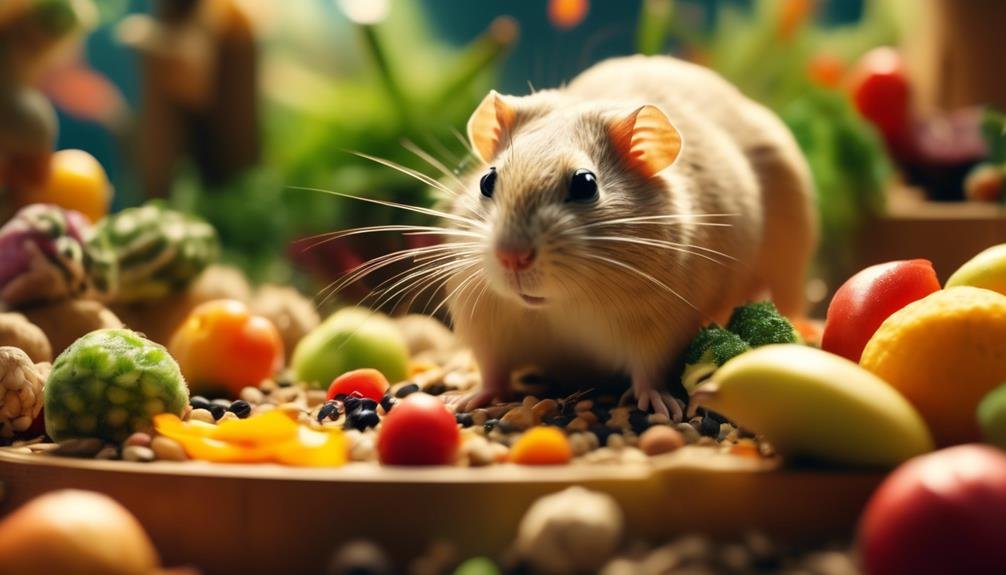
With regards to the lifespan and dietary requirements of Mongolian gerbils, understanding their specific needs is crucial for maintaining their overall health and well-being.
In captivity, Mongolian gerbils have an average lifespan of around 2-3 years. To ensure their longevity, gerbils require a proper diet consisting of a mix of seeds, grains, and fresh vegetables. A high-quality gerbil pellet can also be included in their diet.
It is important to provide fresh water at all times and avoid feeding them sugary or fatty foods. Additionally, gerbils have a natural instinct to hoard food, so it is recommended to scatter their food throughout their habitat to encourage their natural foraging behavior.
Proper nutrition plays a vital role in keeping Mongolian gerbils healthy and thriving.
Importance of Veterinary Care
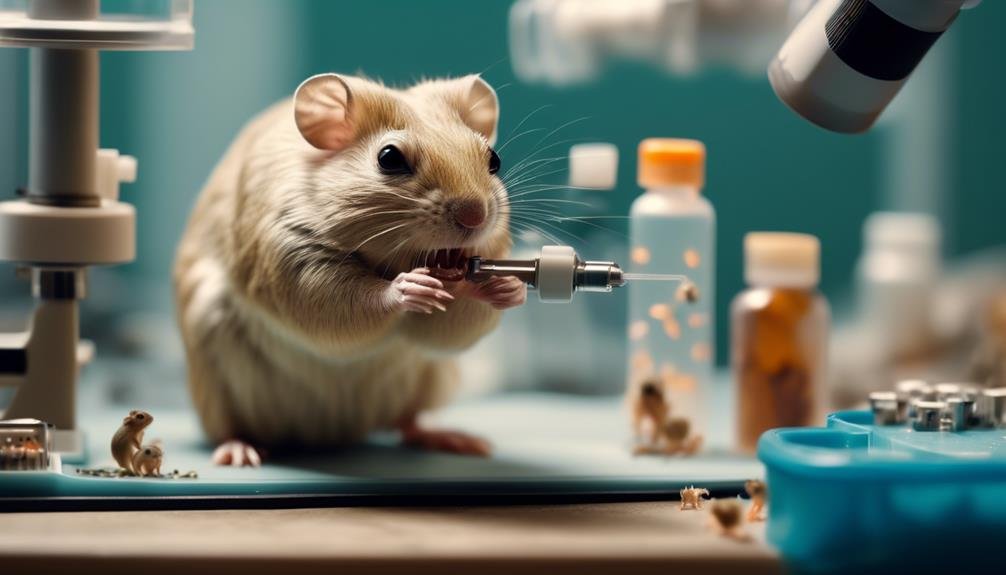
Proper veterinary care is essential for ensuring the overall health and well-being of Mongolian gerbils in captivity. Regular check-ups and preventative care measures can help identify and address any potential health issues before they become severe. Here are three important reasons why veterinary care is important for gerbils:
- Early Disease Detection: Regular veterinary examinations can help detect any underlying health issues early on. Gerbils are prone to dental problems, tumors, and epilepsy, among others. A veterinarian can conduct thorough examinations, including dental checks and blood tests, to identify any potential health concerns.
- Vaccinations and Parasite Control: Gerbils can be vulnerable to various diseases and parasites. Veterinary care includes administering necessary vaccinations to protect against infectious diseases and providing appropriate parasite control measures to ensure the gerbil’s well-being.
- Nutritional Guidance: A veterinarian can provide guidance on the proper diet and nutritional needs of gerbils. They can recommend balanced diets and offer advice on feeding habits to prevent obesity and other dietary-related health issues.
Legal Restrictions and Regulations
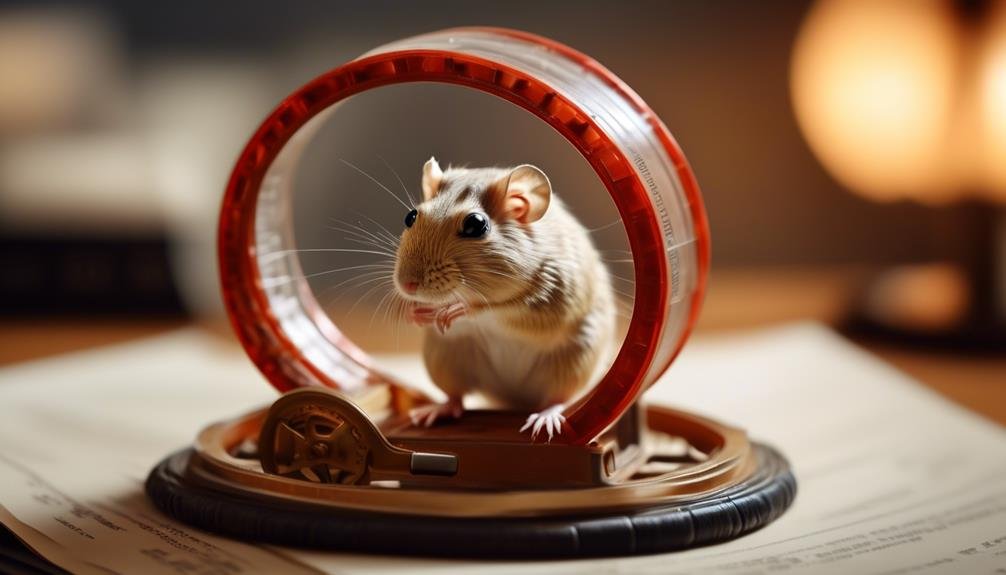
Legal restrictions and regulations play a significant role in the ownership and keeping of gerbils in certain regions.
In some places, such as California and New Zealand, there are specific laws that restrict or prohibit the ownership of gerbils as pets. These restrictions are often in place to prevent the introduction or spread of invasive species or to protect native wildlife.
For example, in California, gerbils are classified as exotic animals and are prohibited from being kept as pets due to their potential to escape and establish wild populations.
Similarly, in New Zealand, gerbils are considered a pest species and their importation and ownership are strictly regulated to prevent ecological damage.
It is important for potential gerbil owners to be aware of and comply with these legal restrictions and regulations to ensure the well-being of both the gerbils and the environment.
Frequently Asked Questions
What Is the Average Lifespan of a Mongolian Gerbil in the Wild?
The average lifespan of a Mongolian gerbil in the wild is around 2-3 years. However, it is important to note that gerbils in captivity may have a longer lifespan due to better nutrition and veterinary care.
Are Gerbils Prone to Any Specific Genetic Diseases?
Yes, gerbils are prone to specific genetic diseases. They can develop inherited epilepsy, obesity, and pancreatic islet hyperplasia. Regular veterinary care, appropriate diet, and suitable habitat are crucial for their health and well-being.
How Many Different Coat Colors Are There in Mongolian Gerbils?
There are over 20 different coat colors observed in Mongolian gerbils. These include Golden Agouti, Lilac, Dove, Burmese, and Light Colourpoint Agouti, among others. Selective breeding has allowed for a variety of color variations in captive-bred gerbils.
Can Gerbils Be Kept as Pets in California and New Zealand?
Yes, gerbils can be kept as pets in California and New Zealand. However, it is important to note that there are legal restrictions on owning gerbils in certain regions, so it is advisable to check local regulations before keeping them as pets.
Besides Epilepsy, What Are Some Other Common Health Concerns in Gerbils?
Some common health concerns in gerbils include teeth problems, trauma, neglect, epilepsy, and tumors. Teeth problems can cause overgrowth and injury, while trauma can result in broken limbs or fractured spine. Neglect can lead to dehydration, starvation, ulcers, and cannibalism.
What are the Differences and Similarities Between Mongolian Gerbils and Fat-Tailed Gerbils?
The rare desert rodent captivates admirers with its distinct features and behavior. Mongolian gerbils and fat-tailed gerbils share similarities such as being sociable and active, but they have notable differences. Mongolian gerbils are smaller and have a slender tail, while fat-tailed gerbils display a plump appearance due to their larger bodies and fleshy tails. Their unique characteristics add to the allure of these fascinating creatures.
Conclusion
In conclusion, Mongolian gerbils have a fascinating history. They originated in the grasslands of China, Mongolia, and Russia and have played an important role in scientific research. They have also become popular pets because of their sociable nature and ease of handling. However, owners should be aware of potential health concerns.
Providing proper care, veterinary attention, and a suitable habitat is crucial for the well-being of these captivating animals. By doing so, owners can ensure that their gerbils live a happy and healthy life. Additionally, the genetic discoveries made in recent years have further enhanced our understanding of gerbils and their unique characteristics.
Overall, Mongolian gerbils are remarkable creatures that have captured the interest of both scientists and pet owners alike. Their history, role in research, and genetic discoveries have contributed to our knowledge and appreciation of these fascinating animals.

